To view this content, you must be a member of the Rose City Review Patreon
Already a qualifying Patreon member? Refresh to access this content.
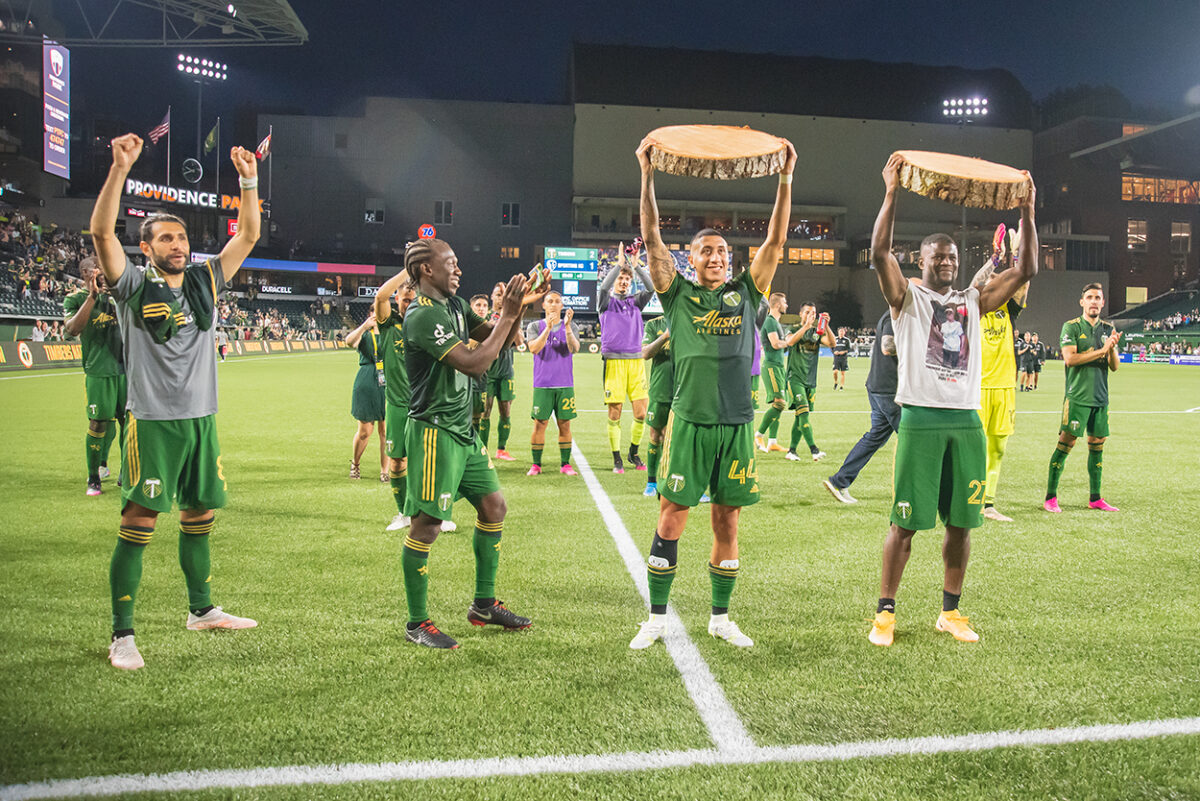
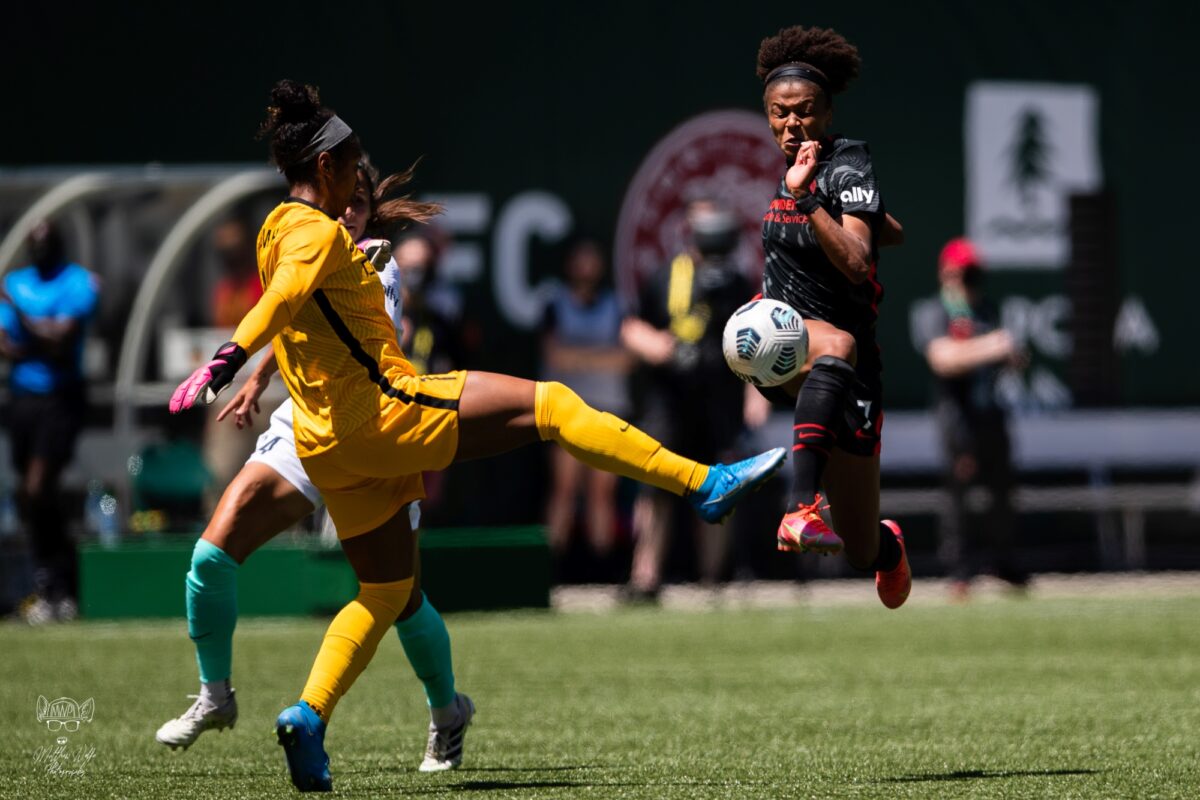
The Thorns held on for the three points on Sunday in a match featuring Simone Charley’s second regular season goal (!!), 80% fan capacity at Providence Park (!!), and some very warm weather for a late June Portland afternoon.
Here are a couple of my takeaways from the game:
I’ve talked a lot about the Thorns and missed chances this year, and I think this game was (hopefully) a turning point in that regard. It’s not that Portland did an especially good job on capitalizing on their chances—they recorded 20 shots on the afternoon, with only one goal to show for it—and it’s weird to say this match marked a shift right before five players step away from the team for the Olympics.
Still, I think Mark Parsons said it best when asked about Christine Sinclair’s missed penalty after the match:
“I think the team were excellent because we missed chances. I think we missed three or four chances that we should score. And I thought, in other games that could affect our decisions. OL Reign or Orlando, when we went through that period, a decision starts to get a bit more desperate, and we were starting to force things or take things on early or not play as fluid, as free in our decision making. I thought it was the opposite today.”
It doesn’t hurt that Simone Charley was the one who scored, either—both because she had the most good looks on goal of any player in the first half and because she’ll still be around through Olympic absences.
“For me personally, it was great to be able to get a goal and use that as momentum going into the Olympic break,” Charley said. “I think you got a taste of seeing how deep our team is, so I’m pretty excited for these upcoming weeks.”
I hope I’m not the only one who saw Sunday’s lineup and immediately thought of the last time Sinc played as a dual No. 9 for the Thorns—specifically alongside Tobin Heath in Portland’s Very Weird last two games of 2019.
Fortunately, things were different this time around. Parsons said Tyler Lussi, Sophia Smith, and Morgan Weaver were all dealing with small injuries going into the match, and Charley had taken some time off during the international break for personal reasons.
(It was probably less fortunate for Elizabeth Ball—both in terms of her team losing the match and in terms of being on the receiving end of an interesting yellow card for “the offense of handling the ball to stop a promising attack,” according to match officials.)
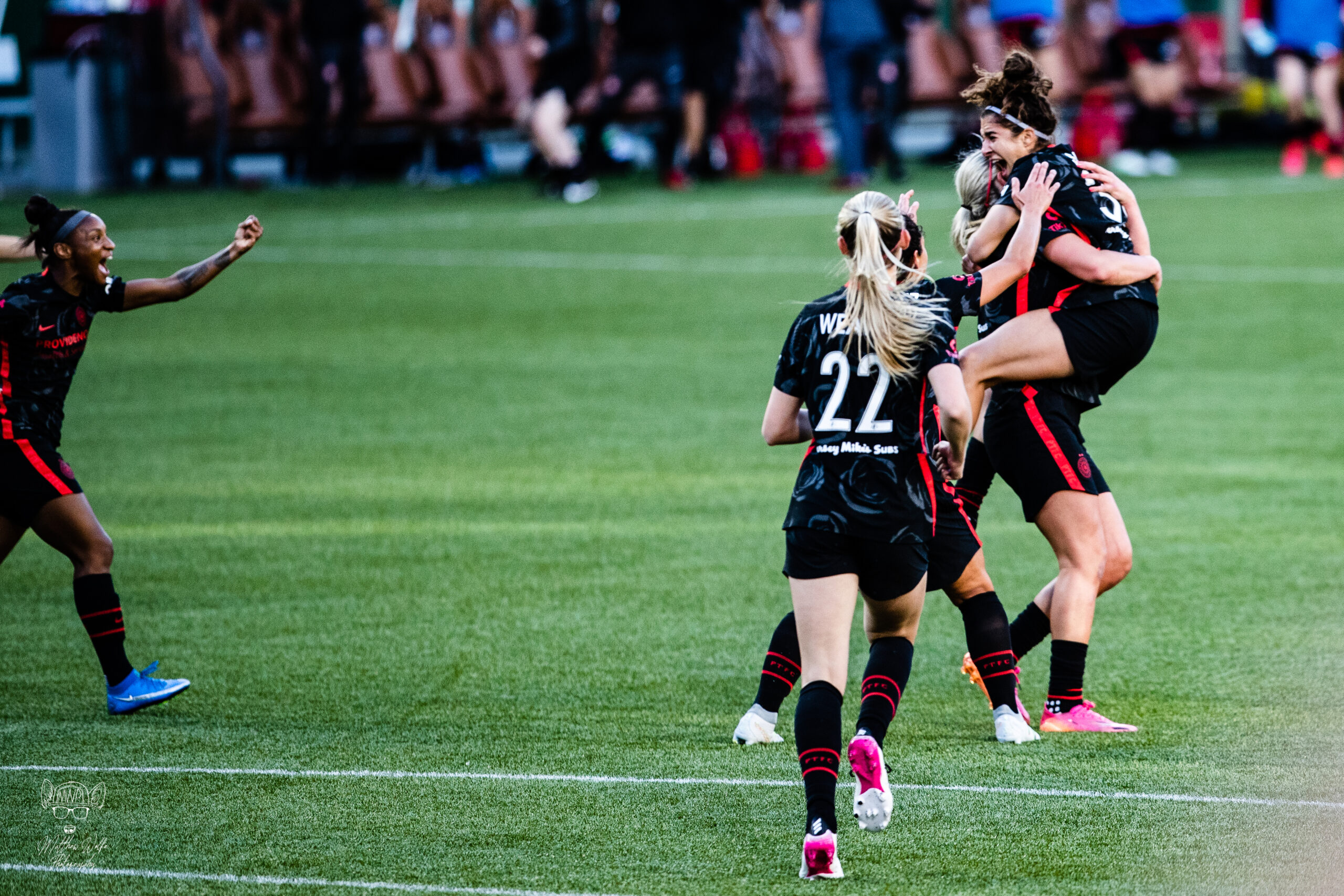
The Thorns coasted to a confident 3–0 win against Racing Louisville last night on the strength of goals by Angela Salem (!!!), Rocky Rodríguez, and Lindsey Horan. Although Louisville struggled to put together much of an attack, it was one of Portland’s most complete performances all year. Even with Christine Sinclair unavailable, their usual game plan worked exactly the way it was supposed to, and just as important, the gals showed progress against their perennial bugbear of ludicrously unlucky finishing.
On the defensive side of the ball, Portland’s press clicked last night better than it has all season, barring maybe the 5–0 Red Stars blowout. They didn’t do anything new, they just looked extremely well-organized at the same scheme they’ve been implementing all season.
In broad strokes, the Thorns’ pressing strategy in the defensive phase consists of encouraging their opponent to move wide, cutting off options into the center of the field, and trapping them on the wings. Here’s an example of how that worked last night:
Clip cortito y editado con energía de domingo, pero cada vez es más y más importante no solo presionar a la pelota, sino presionar espacios y presionar receptoras. Thorns hace esto de manera impecable. pic.twitter.com/OxL9zEM7eq
— Tony ⚡⭐⭐⭐🇦🇷 (@xGisfornerds) June 6, 2021
As Tony points out, most players aren’t pressing the ball here, but constricting the space and limiting Louisville’s options when it comes to passing centrally. After chasing the ball to outside back Emily Fox on the left wing, Fox only has one option, which is to pass backwards to center back Kaleigh Riehl. Riehl, in turn, has no options going forward and has to throw the ball away.
The Thorns also deployed a suffocating counter-press that bore fruit several times—including a moment that led indirectly to Salem’s opening goal in the eighth minute.
The Thorns have just lost possession here, but—because of Rodríguez, Weaver, and Horan cutting off passing lanes, and Simone Charley hovering near Fox—Louisville midfielder Freja Olofsson has nowhere to pass but straight back:
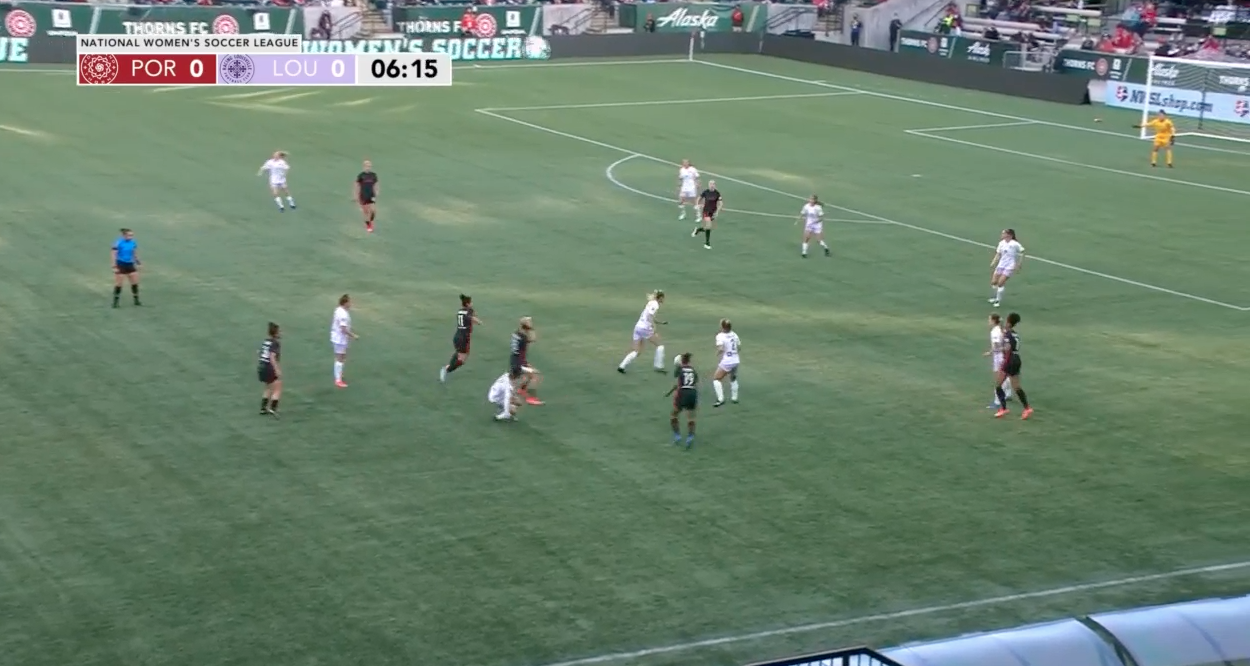
Riehl receives the pass, but quickly gets hemmed in herself, as Weaver and Charley both charge toward her, and Rodríguez and Dunn mark Olofsson and Fox, respectively, eliminating them both as options:
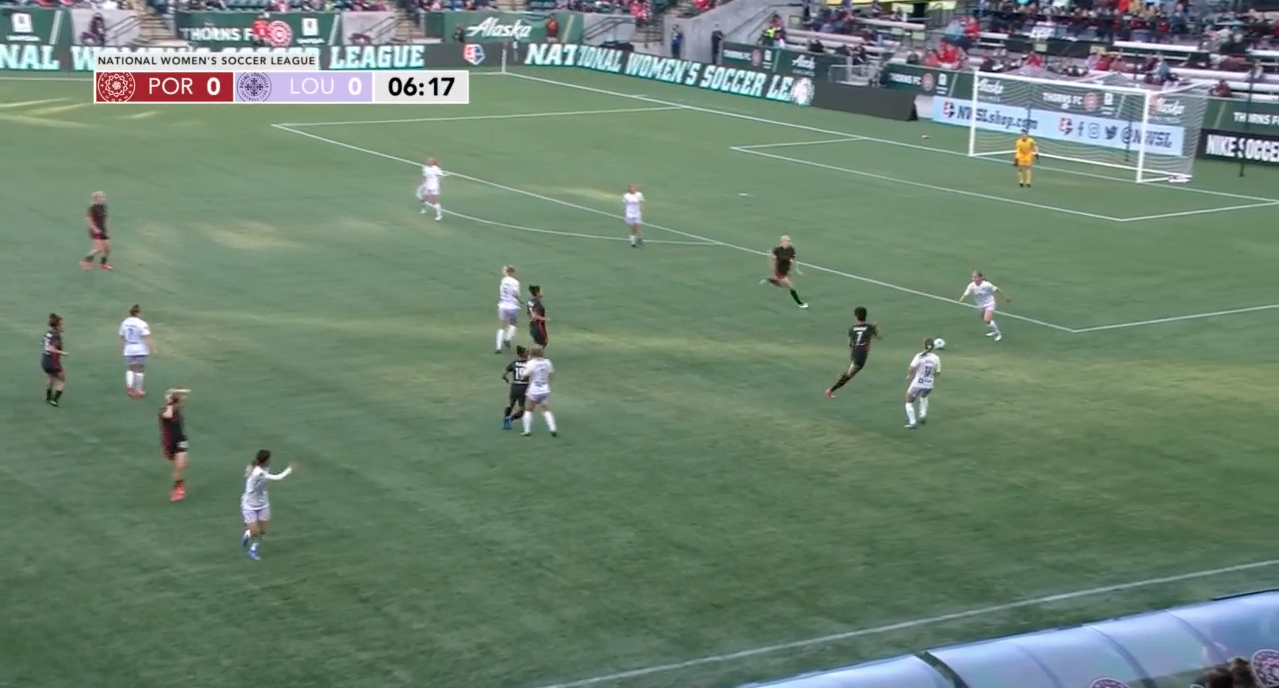
Dunn and Rodríguez close in and, with no remaining choice besides booting the ball to the moon, Riehl dribbles straight into the trap the four Thorns players have created:
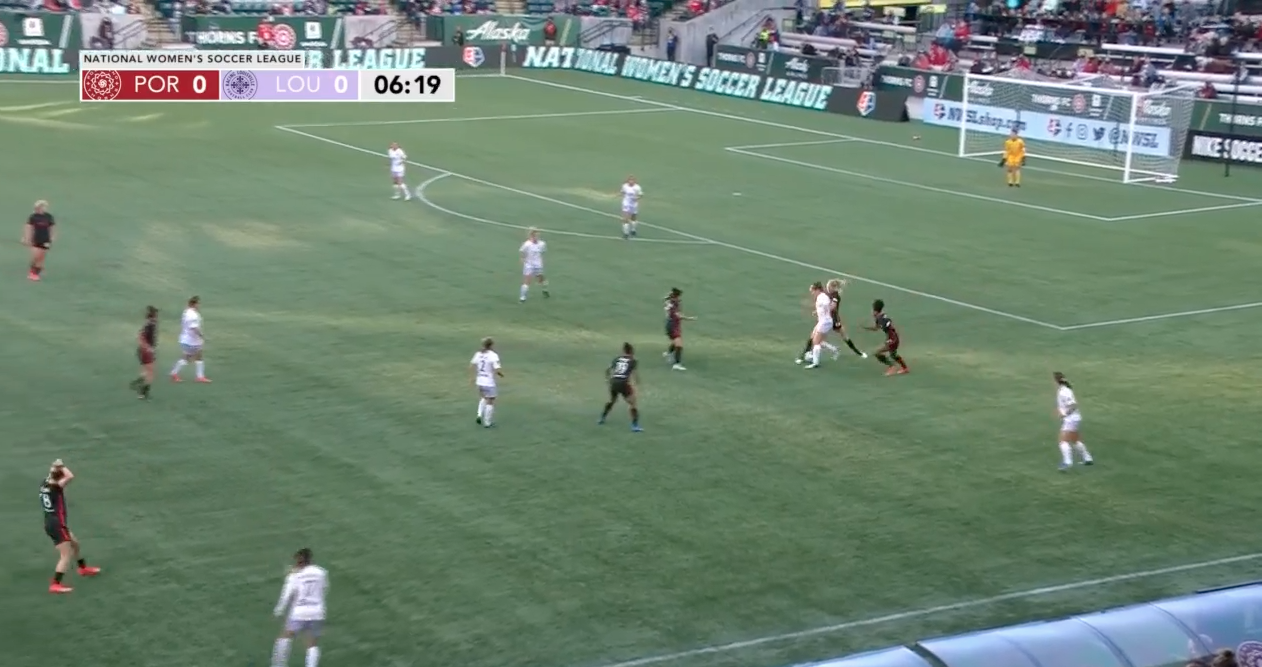
From here, Weaver strips the ball off Riehl, dribbles a few yards to the left, and takes a powerful shot that bounces off a Louisville defender for a Thorns corner. Racing is sloppy clearing the ball on Kling’s initial service, and it eventually falls to Salem, who scores.
The midfield last night consisted of Salem, Rodríguez, Horan, and Dunn, who slotted in for Christine Sinclair as the captain had already departed for the international break. The beautiful thing about this group is that Dunn, Rodríguez, and Horan can all play any central midfield role, so what we saw was quite a bit of fluidity among the group. Dunn, nominally the No. 10, would drop deep fairly often, with Horan and Rodríguez often making runs into the box ahead of her. Salem, the No. 6, had the most restricted role, but still roamed quite a bit.
Heat maps for Dunn (left) and Salem (right) are below:

It’s clear which player is which. Salem, the No. 6, has more actions in Portland’s defensive half (of course, Portland spent most of their time attacking, so no one did a ton back there), while Dunn hung out a lot in the space between Louisville’s midfield and defense, as well as getting into the box. But there’s also non-negligible overlap between the two players; Dunn dropped deeper at times, and Salem also got forward into that same pocket outside the 18.
After the game, Salem noted that the midfield “felt really fluid” and explained the group has been working on their organization, saying, “Sometimes with [our] midfield, we’re not always balanced, because we have such an attacking mindset in there. The focus has really been on just creating balance and holding space and staying disciplined. I think the midfielders all did that tonight.”
Here are the two No. 8s, Horan (left) and Rodríguez (right):

These two have a little less freedom than Dunn, but only horizontally, as each of them mostly sticks to one side of the field. Vertically, they both spend significant time in both halves of the field.
Like the team’s press, none of this is new—what I wrote above is the definition of a box-to-box midfielder—but last night, it all snapped into place in a new way, with everyone choosing their moments to get forward while staying attuned to the movements of the other three and ensuring they weren’t leaving areas of empty space. Salem is the holding mid, but all three of the others could be seen playing deeper than her at times. This is what you get when you put together three players who are all among the best in the world at their preferred position, and almost as good at a handful of others, and give them a few months to train together.
One other thing I want to point out from those heat maps: Horan? She does a lot! We all know this, but even if you know it, she does more than you probably realize.
This was another very lopsided match: The Thorns registered 28 shots to Louisville’s 4, putting 12 on frame. Louisville had zero shots on target.
As dire as Racing’s offense was, however, it’s also worth noting that defensively, they put up more of a fight than Chicago in their big loss, or the Reign in their Challenge Cup match. Obviously, they didn’t succeed in stopping Portland’s attack, but there was visible organization in their press, so it’s not like they rolled out the welcome mat for the Thorns. In the first half, they won 25 duels to the Thorns’ 17. That dropped to 23 and 26, respectively, in the second half, likely as Louisville’s arduous journey to Portland caught up with them.
Finally, Portland significantly out-possessed and out-passed their opponents: 59.6% to 41.4%, and 517 to 375 total passes, respectively. As with the duel numbers, the second half was substantially more lopsided in both respects.